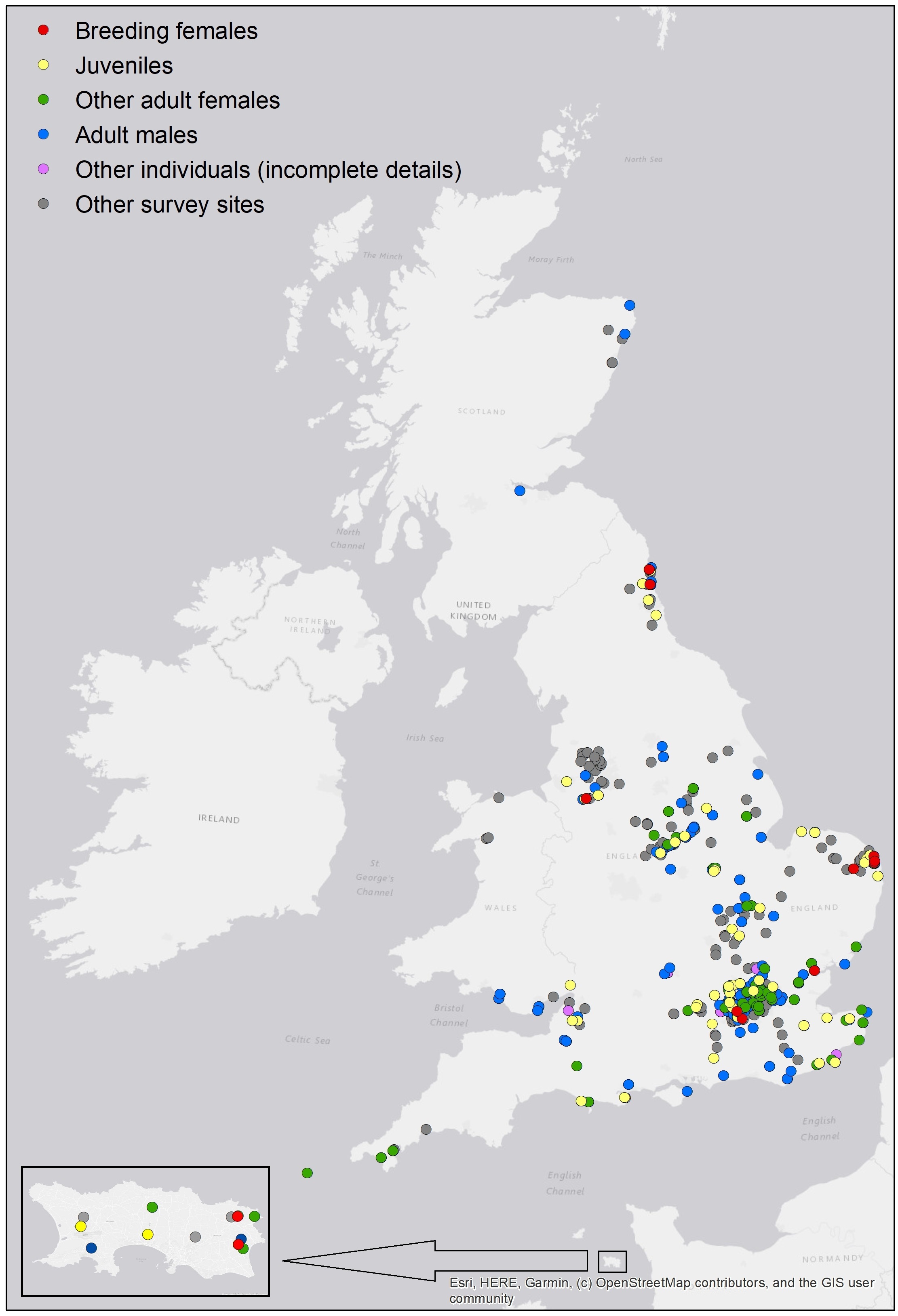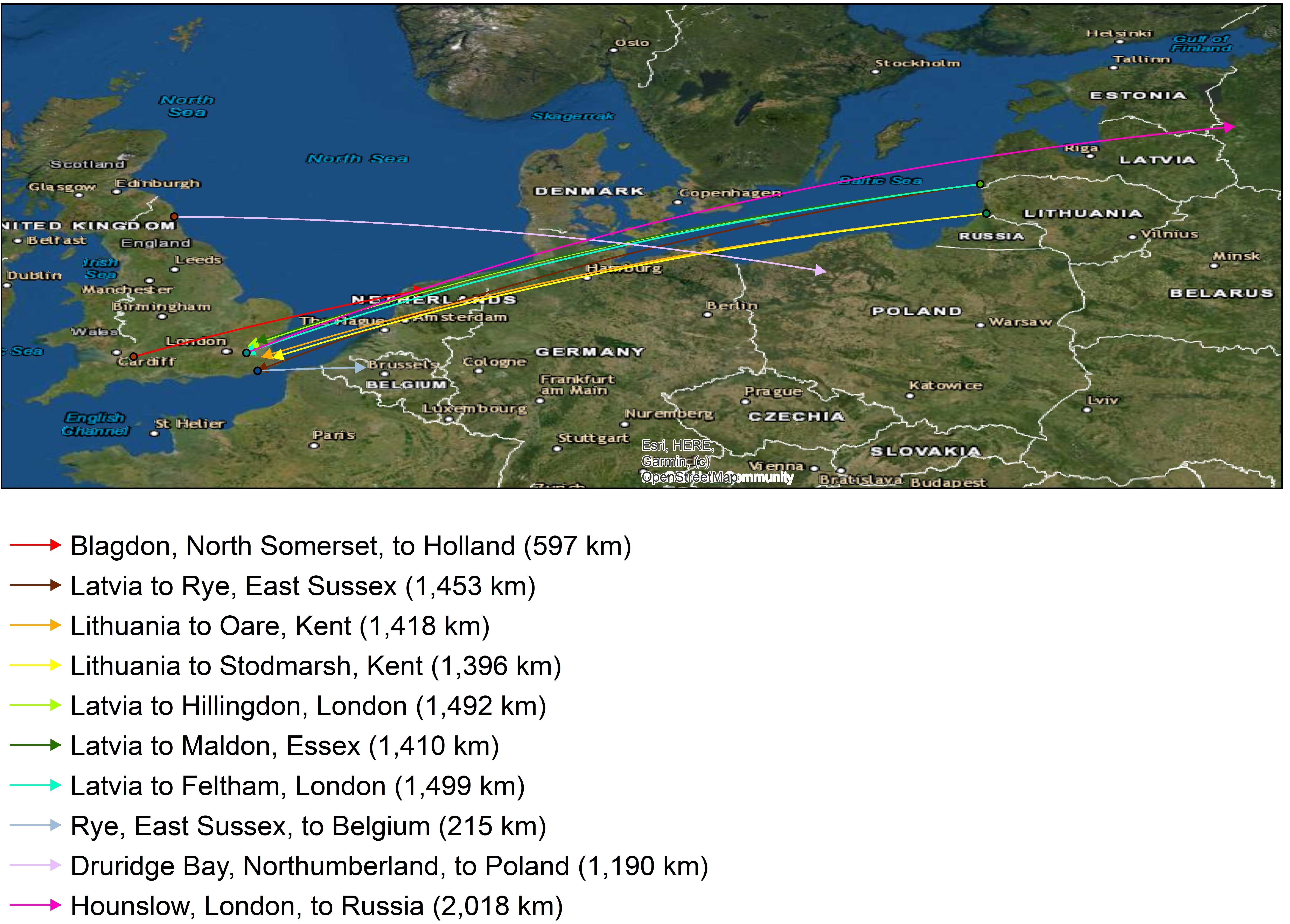National Nathusius' Pipistrelle Project
The National Nathusius Pipistrelle Project in its current setup has been put on hold in England as of November 2023. Many thanks to those that have taken part.
Nathusius' pipistrelle is considered rare in the UK but may simply be under-recorded. It is often found at large waterbodies, particularly during its autumn migration period. Read the species fact sheet here.
The National Nathusius' Pipistrelle Project was launched in 2014 with a grant from the People's Trust for Endangered Species, to improve our understanding of the ecology, current status and conservation threats for Nathusius' pipistrelles in Great Britain.
We are pleased to say that the project’s original aims have been met in England. These were:
- Determine the resident and breeding status of Nathusius' pipistrelle in Great Britain.
- Determine the migratory origins of Nathusius' pipistrelles in Great Britain.
- To gather further information on the distribution of Nathusius’ pipistrelle in Great Britain and the Channel Islands.
There is still work to do to explore residence, breeding status and distribution in Scotland and Wales. In addition, not all parts of the UK have been surveyed and should your group have scientific questions it wishes to answer locally or as part of a larger research network, through a bat group project, we will look to support the group in this where possible.
Survey methods
Briefly, the strategy of the NNPP was:
1. Identify hotspots of Nathusius' pipistrelle activity using acoustic bat detector surveys. Many Nathusius' pipistrelle hotspots have already been identified by BCT's earlier Nathusius' Pipistrelle Survey which ran from 2009-2014.
2. Using harp traps and acoustic lures in activity hotspots, trap individuals under licence and ascertain their breeding status, and, if an experienced bat ringer is part of the project team, ring each individual.
3. If females are captured in the pre-breeding period, undertake radio tracking to locate potential maternity roosts.
Key results

Nathusius' pipistrelle captures April 2011 to October 2022 (plus some bat box and grounded bat records submitted to the project). At each site there may be records falling into more than one category but the symbol indicates the level to which breeding or potential breeding has been identified: breeding females (confirmed breeding that year) > juveniles (potentially born locally, though may have come from elsewhere) > other adult females (some had bred in the past but no evidence of breeding that year) > males only caught.
- Based on data received to date, from April 2011 to October 2022, there have been 2,761 Nathusius' pipistrelles records (including some recaptures of individuals). Twenty-three were currently breeding females, 471 were adult females who showed no evidence of breeding that year (101 had bred previously though whether at that particular site or even in the UK is not known), 1,924 were adult males, 305 were juveniles, and 38 didn't have the sex and/or age recorded.
- Work carried out by the University of Exeter on stable isotopes in the fur samples of Nathusius pipistrelles caught during this project suggests that these bats have a migratory origin further northeast than the UK, and that the Nathusius’ pipistrelles originated from more northerly latitudes than soprano pipistrelles.
- Maternity colonies have been discovered in Kent, Northumberland and on the Surrey/Greater London border.
- Ten long distant migratory records have been found: a bat ringed in North Somerset was rediscovered in Holland in December 2013; a bat ringed in Latvia was recaptured in East Sussex in October 2015; two bats ringed in Lithuania were recaptured in Kent in August and October 2016; and two bats ringed in Latvia turned up in Greater London in August and September 2017; a bat ringed in Latvia turned up in Essex in September 2017; a bat ringed in East Sussex was found in Belgium in September 2018; a bat ringed in Northumberland was found in Poland in May 2019; and a bat ringed in Greater London was found in Russia in August 2021. The minimum distances travelled are shown below.

Survey documents
For those groups licensed to take part in Scotland or Wales, or groups in England wishing to conduct their own projects following the NNPP methodology, please see the following documents.
1. NNPP IUCN Covid RA 2022 - (RA1) Country and region assessments of COVID to be completed for each survey
2. NNPP COVID RA checklist 2022 - (RA2) COVID related checklist for before, during and after a survey
3. NNPP H&S RA template 2022 - (RA3) Field survey health and safety risk assessment to be completed for each survey site
4. Safety Guidelines for Evening Field Work with Bats (NNPP) 2022 - Advice on considerations for safety in the field
5. Survey methods 2023 - containing updated methodology such as PPE and data collection
Please click here to download a zip file containing all the above documents (including word and pdf versions): download file
For those groups wishing to start acoustic data collection with the view to trap in future, we have produced acoustic survey tips for this purpose. Email Abby on batgroups@bats.org.uk to request this.
What's next?
BCT, in collaboration with UWE Bristol, have secured funding from Natural England to review the available data and literature on bat migration in the UK and undertake a comprehensive analysis of all capture and ringing data gathered during the NNPP. This is part of a wider project looking at bat migration and offshore wind developments.
If you have any unpublished research, data or case studies (separate to NNPP submitted data) that you would be willing to share to inform our understanding, please contact jhooker@bats.org.uk.
There are still many questions around Nathusius’ pipistrelle and bat migration in the UK left to answer. Our hope is to conduct further dedicated research into these questions.
Related content

